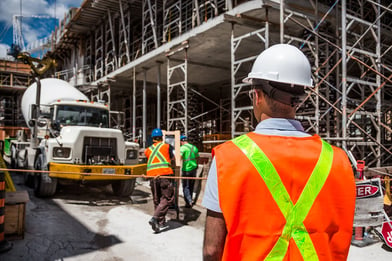 Whether your crew is building a new industrial or retail facility, or if you’re constructing homes with slab foundations, you know the difficulties of getting concrete to cure properly. It can be a time-consuming process, especially when you’re dealing with extreme temperatures, precipitation, or even excessive wind.
Whether your crew is building a new industrial or retail facility, or if you’re constructing homes with slab foundations, you know the difficulties of getting concrete to cure properly. It can be a time-consuming process, especially when you’re dealing with extreme temperatures, precipitation, or even excessive wind.
Unfortunately, excessive moisture rising from new concrete—as part of the curing process or because of excessive moisture from beneath the foundation—can cause a host of problems in a completed structure.
In an industrial or other setting where the concrete will be the main flooring, unchecked moisture can cause:
- Rust and other damage to industrial equipment
- Mold growth beneath wooden pallets and other fixtures
- Respiratory illnesses for workers (primarily due to mold)
- Wet or slick floors, increasing the risk of slip-and-fall accidents
If other flooring materials are laid on top of the concrete slab, the problems can multiply:
- Hardwoods and laminates can warp
- Carpets can harbor mold and fungal growth
- Epoxy and other floor coatings can blister or fail to adhere to the floor
How a moisture control barrier coating can help
With especially moisture-prone concrete, one potential solution for excess water vapor escaping from (or through) the concrete is to apply a moisture vapor barrier on top of the slab. This layer will seal the top and essentially “lock in” the existing moisture.
It’s important to do this when the moisture content is at the right level to maintain the desired strength of the concrete. You’ll want to get a professional moisture test done first to make sure the levels are appropriate.
You’ll also want to work with an experienced flooring contractor who understands the physics of concrete and everything that can go wrong with moisture issues and offer customized solutions.
Learn how CPC Floor Coatings can partner with construction crews, or find out more about vapor barrier coatings via the banner below.

